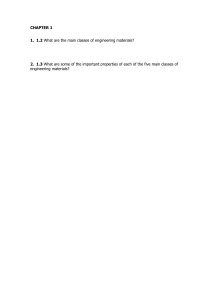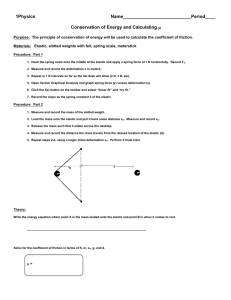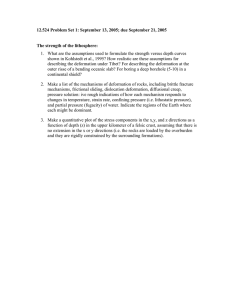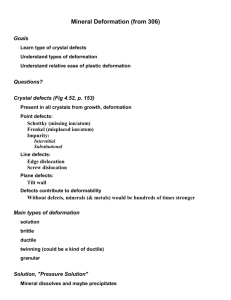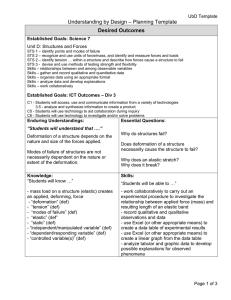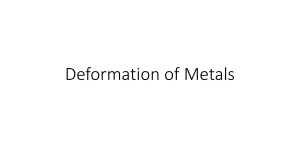Dr. Chandra Mouli
advertisement
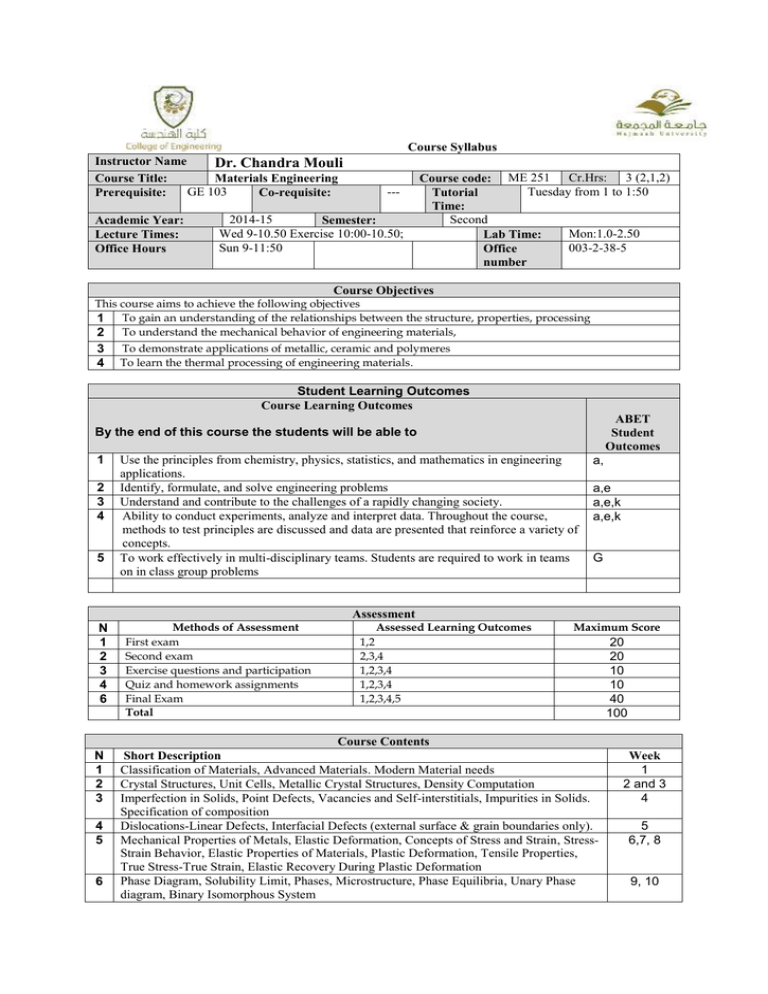
Course Syllabus Instructor Name Dr. Chandra Mouli Course Title: Materials Engineering GE 103 Prerequisite: Co-requisite: Academic Year: Lecture Times: Office Hours --- 2014-15 Semester: Wed 9-10.50 Exercise 10:00-10.50; Sun 9-11:50 Course code: ME 251 Cr.Hrs: 3 (2,1,2) Tuesday from 1 to 1:50 Tutorial Time: Second Mon:1.0-2.50 Lab Time: 003-2-38-5 Office number Course Objectives This course aims to achieve the following objectives 1 To gain an understanding of the relationships between the structure, properties, processing 2 To understand the mechanical behavior of engineering materials, 3 4 To demonstrate applications of metallic, ceramic and polymeres To learn the thermal processing of engineering materials. Student Learning Outcomes Course Learning Outcomes ABET Student Outcomes By the end of this course the students will be able to 1 2 3 4 5 Use the principles from chemistry, physics, statistics, and mathematics in engineering applications. Identify, formulate, and solve engineering problems Understand and contribute to the challenges of a rapidly changing society. Ability to conduct experiments, analyze and interpret data. Throughout the course, methods to test principles are discussed and data are presented that reinforce a variety of concepts. To work effectively in multi-disciplinary teams. Students are required to work in teams on in class group problems a, a,e a,e,k a,e,k G Assessment N 1 2 3 4 6 N 1 2 3 4 5 6 Methods of Assessment First exam Second exam Exercise questions and participation Quiz and homework assignments Final Exam Total Assessed Learning Outcomes 1,2 2,3,4 1,2,3,4 1,2,3,4 1,2,3,4,5 Maximum Score Course Contents Short Description Classification of Materials, Advanced Materials. Modern Material needs Crystal Structures, Unit Cells, Metallic Crystal Structures, Density Computation Imperfection in Solids, Point Defects, Vacancies and Self-interstitials, Impurities in Solids. Specification of composition Dislocations-Linear Defects, Interfacial Defects (external surface & grain boundaries only). Mechanical Properties of Metals, Elastic Deformation, Concepts of Stress and Strain, StressStrain Behavior, Elastic Properties of Materials, Plastic Deformation, Tensile Properties, True Stress-True Strain, Elastic Recovery During Plastic Deformation Phase Diagram, Solubility Limit, Phases, Microstructure, Phase Equilibria, Unary Phase diagram, Binary Isomorphous System 20 20 10 10 40 100 Week 1 2 and 3 4 5 6,7, 8 9, 10 7 8 9 10 Applications of Metals, Classifications, Manufacturing processes Corrosion and failure Applications of Ceramics, Classifications, Manufacturing processes Applications of Polymers and composites, Classifications, Manufacturing processes Textbook: References: 11,12 13,14 15,16 Books Textbook: Callister, W.D., Materials Science and Engineering, 7th Ed., 2007 Engineering Materials 1: An Introduction to Their Properties and Applications (2nd Ed.), M. F. Ashby and D. R. H. Jones
